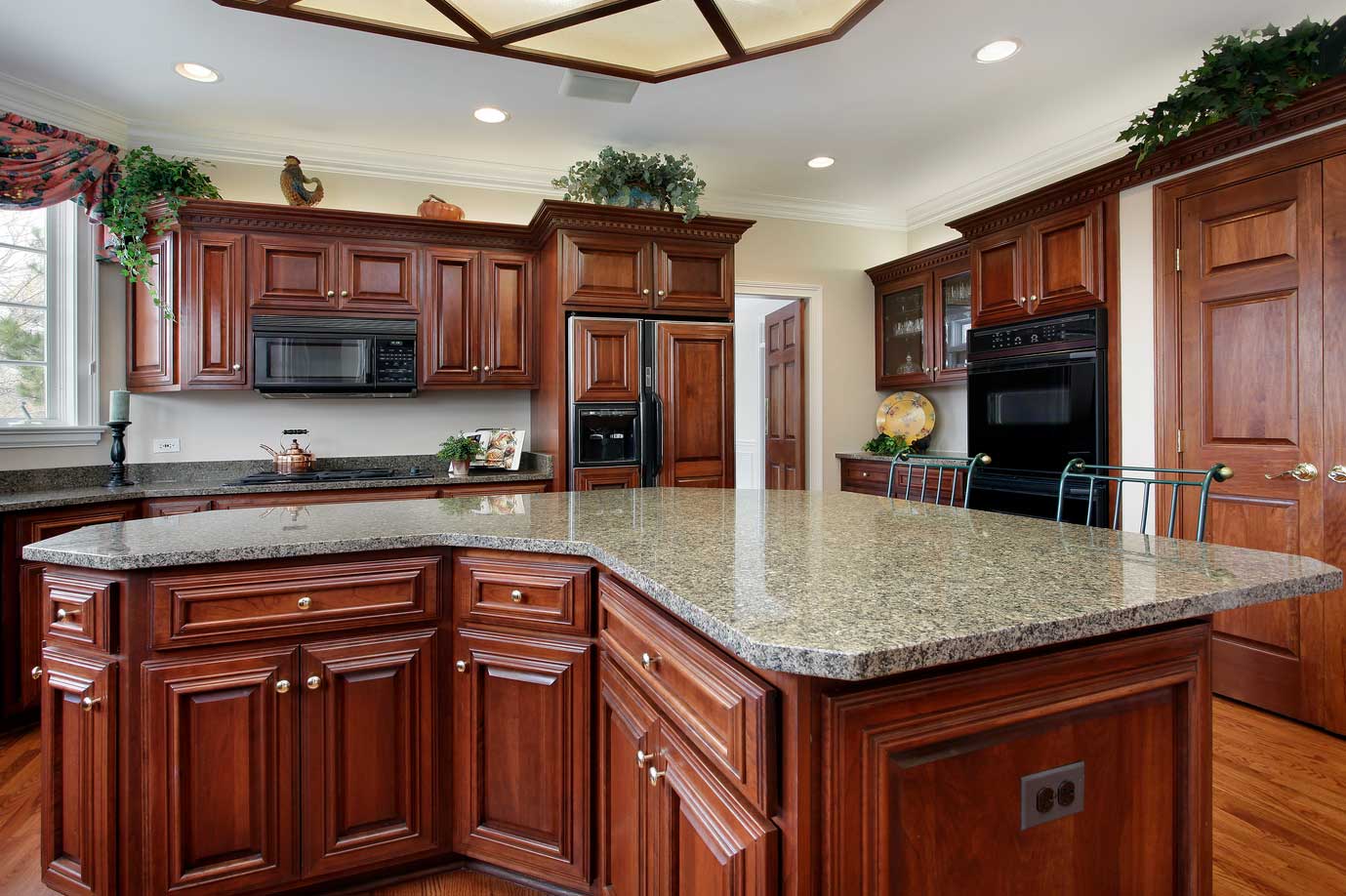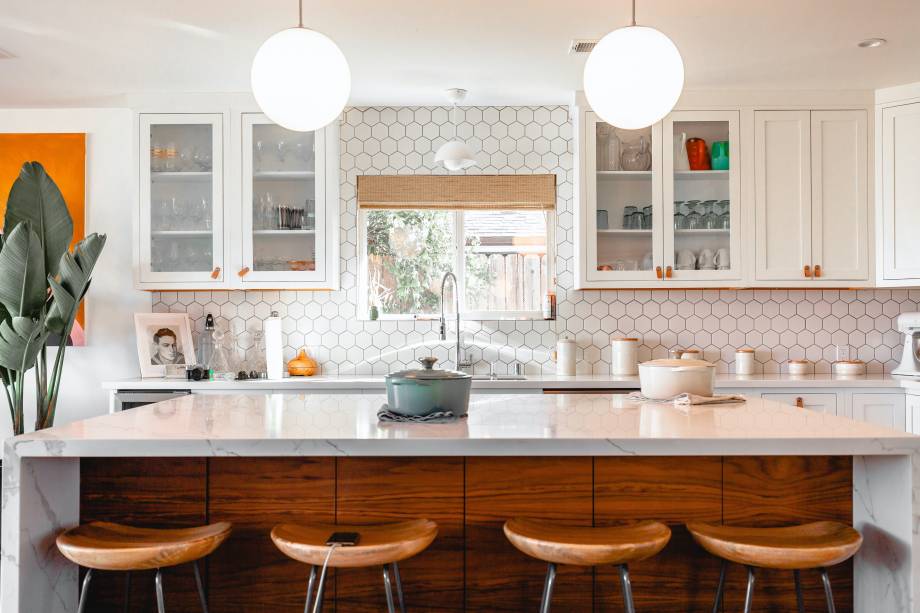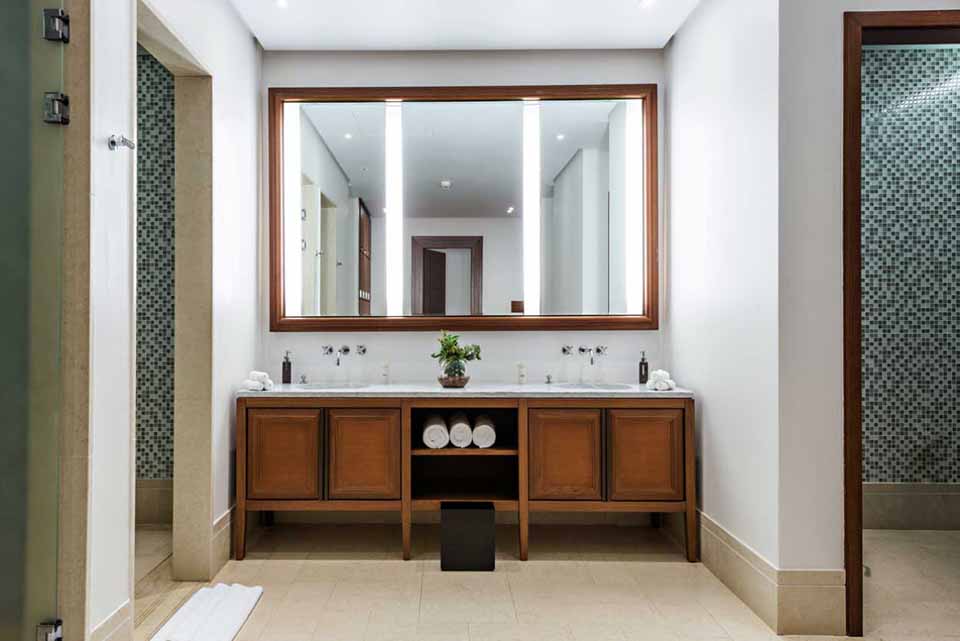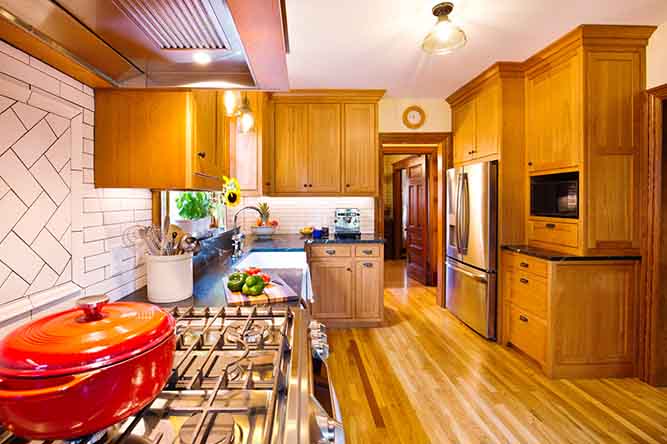Best Ways to Clean and Care for Custom Cabinets
No matter whether you have white oak, red oak, walnut, cherry, maple, silver maple, hickory, or any other type of kitchen cabinet doors or drawers, caring for them requires specific measures and precautions. They may look fabulous after installation, but kitchen cabinets tend to show age as time progresses when not cared for properly.
Things like moisture, grease, dust, smoke and other things can attach to the surface or penetrate it whether you have treated or untreated cabinets. On the flip side, a lot of cleaners have great stain and dirt-lifting properties but can damage the finish or the wood. In addition, the tools used to clean the cabinet doors can have either a good or bad effect on the look and finish. With these things in mind, it is important to understand what is safe to use and what is not. It also helps to know about routine maintenance tasks if you want to enjoy your kitchen or bathroom cabinets for a longer period of time.
Cleaning Cabinet Doors And Drawers After Installation
Once you have ordered your cabinet doors and drawers, installed them, and finished them; they will have been exposed to dust, debris, and fingerprints. It is important to give them their very first cleaning using a soft, damp cloth. After that, use another cloth to thoroughly wipe them dry.
You don’t want to leave any dust or debris on the surface or else it can adhere over time and be more difficult to remove. The more effort it takes to clean the cabinet doors and drawers, the more damage you can do to them. Fingerprints leave oils behind that can damage the surface over time, so it is important to clean them off once the installation is complete.
How To Clean Cabinet Doors And Drawers Regularly
To clean your custom bathroom or kitchen cabinets routinely, you should be careful with the chemicals and tools you use. The cabinet doors are the most vulnerable to dust, fingerprints, and wear on the finish so they require the most attention. When wiping the surface, wipe with the grain.
Use a clean, soft, and damp cloth to prevent:
- Scratching the surface
- Wearing away the painted or stained finish
- Tearing up the polyurethane coating
- Once you’ve wiped the surfaces thoroughly, dry them off with another clean cloth to prevent moisture damage.
Never use your dishrag or other used rags because they may contain residual grease or chemicals that can destroy the cabinet doors and drawers.
Safe Chemicals For Cleaning Cabinets
Diluted dishwashing soap is one of the safest cleaners to use, as long as you don’t let the soap sit too long or use too much of it. Using just one drop in a bucket of warm water should do fine for your cabinet doors and drawers. Too much can cause soap to be left behind during the wiping process.
Avoid Products with the Following Ingredients:
- Bleach
- Mineral oil
- Citrus ingredients
- Ammonia
- Silicone
- Petroleum
ALWAYS place the cleaner on the damp cloth and NOT on the cabinet’s surface. The cleaner will end up being highly concentrated in one spot and that could lead to noticeable damage, fading, or discoloration.
Dealing With Spills
It can be easy to miss spots and streaks from spills when cleaning them up. If a spill occurs nearby or on a cabinet surface, be sure to clean it up thoroughly. Water can be the most difficult to see, so you should examine the surface from all angles, especially the sides. This will help to find any glare that is reflected by the lighting in the room.
Leftover liquids on cabinet finishes can lead to stains, faded spots, discoloration, and warping of the surface in extreme cases. It can also depend on what is spilled, but even sodas, fruit drinks, and water can wreak havoc on the cabinet’s finish.
Controlling Humidity Exposure
Humidity causes problems for wood products in general, simply by infiltrating the surface and damaging the wood from within. This is especially a problem when it comes to laminated kitchen cabinets that are exposed to humidity. The surface starts to expand and contract, which leads to warping and/or bubbling around the edges of the laminated surface.
In addition, if any residual cleaners or liquids are left on the cabinet’s finish, the humidity could reactivate the ingredients and cause more harm.
How To Protect Cabinet Surfaces
There is more to caring for your custom-made cabinets than just cleaning them regularly. They age just like anything else and normal wear and tear occurs. This is often most common around the corners, edges, and around cabinet pulls and handles.
To help your kitchen or bathroom cabinets look their best, you should periodically re-coat them with paint, polyurethane coatings, or lacquer finishes. This keeps the “shell” of the cabinet durable and protected from minor impacts or liquid/humidity damage. There is never any guaranteed protection, but every little thing you do will help keep them looking good for life.
Finishing Touches On Cabinet Doors
Some of these methods may work better than others for you, so it is important to mix and match based on your needs. Be sure to carefully any and all instructions on the cleaning products you use, so that you can be sure to follow any safety precautions. If your cabinets are showing signs of age no matter what you do to them, then it could be time to consider replacing or refacing instead of cleaning.
If you are ready to start ordering or if you need assistance, please feel free to call us at 1-855-669-5222 or send us an email at info@cabinetnow.com. Our team of cabinet experts is here to help with everything from measuring to ordering.
 made in the USA
made in the USA







